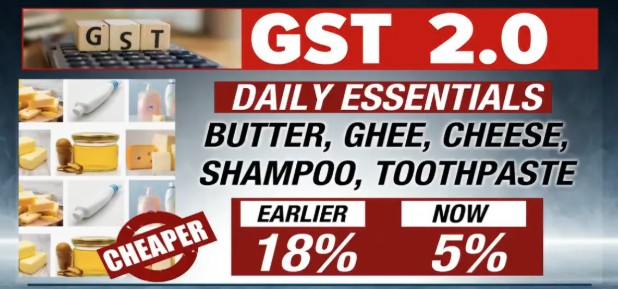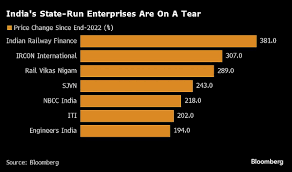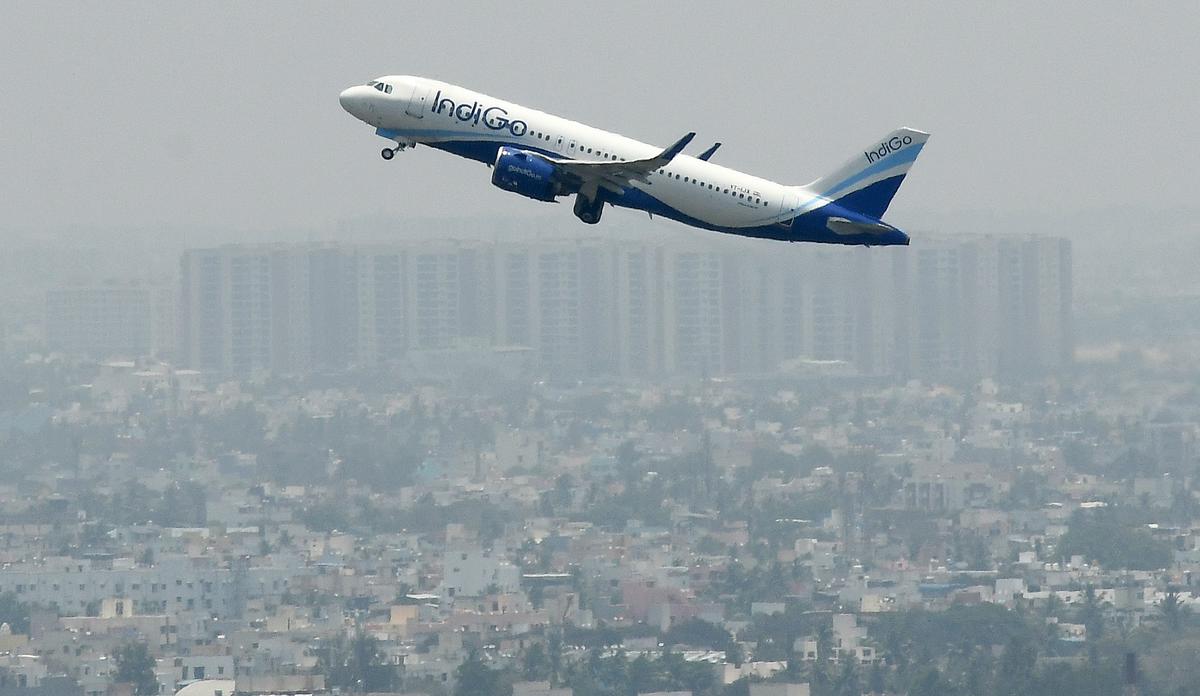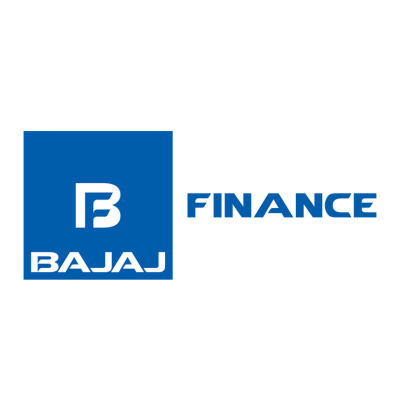Top Trending Finance & Stock Market News & Highlights


GST reform: starting Monday, these goods will be subject to the highest tax. View the complete list
September 22 GST changes: Under the new tax structure, which goes into effect on Monday, items falling within these categories will be subject to the newly revised highest tax rate of 40% GST. View the items' list here.After its 56th meeting on September 3, 2025, the GST Council, which is led by the Indian federal government, voted to streamline the indirect tax system in India by redesigning the current goods and service tax (GST) slab structure into a "two-tier" system.Indian customers will benefit from a revamped "two-tier" tax structure that goes into effect on Monday, September 22, 2025. Depending on the type of commodity sold in the country, it will be subject to either the 5% or 18% tax band. In India, GST is now imposed in four slabs: 5%, 12%, 18%, and 28%. However, the government has since modified these slabs. Many products sold in the Indian economy will see price reductions as a result of the federal government's action; nevertheless, starting Monday, a wide range of products will also be subject to higher consumer taxes. 1. Sin Goods: Generally speaking, sin goods are things that are detrimental to society and health, such as cigarettes and pan masala. Cigarettes, pan masala, beedi, and other tobacco goods including chewing tobacco and gutka, as well as online gaming and gambling, would all be subject to a 40% GST tax starting on Monday, September 22, 2025. 2. Luxury cars: Four-wheelers with an internal combustion engine (ICE) capacity greater than 1,200cc and a length greater than four meters were also placed in a 40% tax level by the GST Council. In the past, the ex-showroom pricing of SUVs and MPVs, which are included in this group, was increased by 28% GST and 22% Cess. 3. Over 350cc two-wheelers: The GST Council raised the tax rate for two-wheelers with engines larger than 350cc from 28% GST and 3% Cess to 40%. Despite the removal of the Cess levy, two-wheelers with engines larger than 350cc will now be subject to a higher tax rate. 4. Soft drinks: The central government raised the GST rate from 28% to 40%, which will result in a price increase for soft drinks and other non-alcoholic beverages like Coca-Cola, Pepsi, Mountain Dew, Fanta, and flavor-infused waters. 5. Items that cost more when you're in the 18% tax bracket: Items that will be subject to GST at the higher 18% slab starting on Monday, September 22, 2025, include dining at restaurants, particularly those with air conditioning and premium outlets; consumer durables like refrigerators, washing machines, and air conditioners; beauty and grooming services at salons and spas; and high-end smartphones and imported devices.
Published 23 Sep 2025 01:19 PM


Live Updates on New GST Rates: When GST 2.0 goes into effect, food, cars, and televisions all get cheaper.
GST Reforms 2025 List: Goods and Services Tax (GST) reforms have become effective today, September 22, marking a historical shift in the country’s indirect taxation by merging four slabs into two (5% and 18%) and a special tax slab of 40% for “sin goods".The GST council, led by Finance Minister Nirmala Sitharaman, early in September announced a major overhaul in the indirect taxation system, aimed at simplifying the slabs, boosting the consumption and rationalizing the rates. Under the new plan, the government is set to merge the four slabs into two main categories with an additional “sin tax" bracket: 5% slab — for essential goods. 18% slab – for most other goods and services. 40% slab – for luxury and sin goods such as tobacco, alcohol, betting, and online gaming. This consolidation is expected to make tax compliance easier and also reduce prices on many items currently taxed at 12% or 28%.This consolidation is expected to make tax compliance easier and also reduce prices on many items currently taxed at 12% or 28%.Consumers will see essential items becoming cheaper from September 22, as several sectors from FMCG to Auto have announced earlier to pass on the benefits of lower GST to them.
Published 22 Sep 2025 05:13 PM


Live updates for the ITR due date: Will there be another extension of the income tax return deadline?
Date of ITR due REAL-time updates: The deadline for filing Income Tax Returns (ITR) for the assessment year 2025–2026 is now. Over 6.69 crore returns have already been received by the Income Tax Department, of which over 6.03 crore have been validated and 4 crore have been processed.Taxpayers who miss today's deadline risk interest on unpaid taxes, delayed refunds, and late fines of up to ₹5,000 (limited at ₹1,000 for individuals with incomes up to ₹5 lakh). Therefore, it is essential to file and confirm returns on time in order to prevent fines and guarantee prompt refund processing.The deadline is applicable to non-audit instances, such as the majority of salaried individuals, small enterprises or professions under the presumptive taxation plan, and Hindu Undivided Families (HUFs). It is recommended that taxpayers refrain from spreading false information about extensions and instead rely solely on official updates from Income Tax India.In order to assist last-minute filers in appropriately completing submissions, the department's helpdesk is open around-the-clock and provides assistance via phone, live chat, WebEx sessions, and social media.The department's help line is open around-the-clock, providing assistance via phone, live chat, WebEx sessions, and social media to help filers who are submitting at the last minute appropriately.
Published 15 Sep 2025 05:53 PM


Closing Bell: Sensex up 324 points, Nifty above 24,950; IT and PSU Banks rise, automobiles down
On September 10, Indian equities indices concluded well, with the Nifty closing above 24,950. The Nifty was up 104.5 points, or 0.42 percent, at 24,973.10 at the closing, while the Sensex was up 323.83 points, or 0.40 percent, at 81,425.15.We'll be returning tomorrow morning with all the most recent news and alerts as we wind up today's Moneycontrol live market blog. To view all of the global market activity, please visit https://www.moneycontrol.com/markets/global-indices.On Wednesday, markets gained almost half a percent, continuing their upward trajectory. Following a gap-up beginning, the Nifty index spent the first half of the day moving within a small range. However, volatility in the second half of the day reduced some gains, and it ultimately finished around 24,973 levels.With advances of more than 2.5 percent, the IT sector maintained its recovery, followed by the real estate, banking, and energy sectors. The auto industry, on the other hand, saw profit booking following multiple outperforming sessions, losing more than 1%. With the midcap and smallcap indices rising between 0.75% and 1%, market breadth stayed strong, supporting the bullish tone in both frontline and broader markets.Positive foreign capital market flows following a period of persistent depreciation, as well as increased confidence regarding the status of trade discussions between the US and India, helped to boost sentiment and maintain the upswing.Although the markets are slowly rising due to encouraging signals, the Nifty will need to maintain its participation from the two main industries—banking and IT—in order to progress toward the 25,250–25,400 range. Support has moved to the 24,650–24,750 level on the downside. In order to build up fundamentally sound counters across the board, we advise employing intermediate drops or consolidation phases while keeping a positive bias.
Published 10 Sep 2025 08:40 PM


Finance & Stock Market
Finance & Stock Market is financial management, which covers tasks including forecasting, budgeting, borrowing, lending, and investing. Finance can be broadly classified into three categories:
- Personal Finance
- Corporate Finance
- Public/government Finance
Lending, banking, investing, forecasting, and a wide range of other topics pertaining to the distribution and trade of financial assets are all included in the broad industry that is finance.
- NYSE - USA
- Nasdaq - USA
- Euronext - Netherlands
- Shanghai Stock Exchange - China
- Japan Exchange Group - Japan
- Shenzhen Stock Exchange - China
- Hong Kong Exchanges - Hong Kong
- National Stock Exchange of India - India
- LSE Group - UK
- Saudi Exchange - Saudi Arabia


Google parent Alphabets share price drops 6 percentas ad revenue declines and capex increases.
Wall Street was let down by Alphabet on Tuesday when the company revealed that this year it would be spending more on things like servers that fuel artificial intelligence, despite the fact that holiday-season advertising sales fell short of forecasts.After hours trading saw a 6% decline in Alphabet shares. Alphabet's dominant businesses, Google and YouTube, have been up against competition for advertising budgets from other online platforms like Facebook, Instagram, TikTok, and Amazon.com, all against the backdrop of conflicting U.S. economic indications.The company's fourth-quarter ad revenue increased to $65.5 billion from $59.0 billion the previous year, with retail sales being a bright light. Based on LSEG statistics, that fell short of analysts' average projection of $66.1 billion.According to Thomas Monteiro, an analyst at Investing.com, "Alphabet's disappointing ad revenue numbers suggest that corporations worldwide are still uncertain about the pace of interest rate cuts from global central banks."Google, the creator of the technology that laid the groundwork for the current AI boom, is engaged in conflict with two major competitors in the market: OpenAI, the company that created ChatGPT, and Microsoft, which supports it.Microsoft's Azure grew faster in the same period that Google Cloud's revenue exceeded Wall Street forecasts and growth resumed with a boost from AI.Such AI demands significant investments in data centers, servers, and research. Alphabet's capital expenditures surged by 45% to $11 billion, the biggest level in years. During a conference call with analysts, Chief Financial Officer Ruth Porat stated that this year's capital expenditures will be significantly higher than those of 2023.Technology companies have been reducing staff and shutting down non-priority initiatives in order to save expenses. According to Porat, Alphabet anticipates spending $700 million on severance-related costs in the first quarter.Google is giving its ChatGPT competitor Bard access to a potent model suite dubbed Gemini. A agreement to invest up to $2 billion in the well-known AI firm Anthropic was also made, as it attempts to lure clients away from more established cloud rivals Microsoft and Amazon. Additionally, it is giving advertisers control over Gemini to maintain their financial support for Google's search division.However, because ad purchasers may be deterred by geopolitical and economic uncertainties, AI's boost to advertising may still be some way off. Alphabet's AI initiatives are being investigated by the US, and Google is preparing to file an appeal of a significant antitrust lawsuit that it lost. Alphabet reported $20.7 billion in profit for the fourth quarter."BETTER THAN AN AGENT" During the analyst call, Alphabet CEO Sundar Pichai highlighted the advancements made with AI in various areas of the company, such as posing new queries that Google can skillfully handle. Since OpenAI's November 2022 announcement of ChatGPT, which demonstrated to the public how so-called generative AI can create fresh text and graphics with a single command, a frenzy has engulfed the technology industry. The possibility of AI "agents" managing human demands with more autonomy has also increased with advancements.When asked about Google Assistant, the company's digital assistant, Pichai stated that artificial intelligence (AI) "allows us to act more like an agent over time" and "go beyond answers and follow through for users even more." Investor interest in Google Cloud has increased as Alphabet concentrates on artificial intelligence. The segment turned a quarterly profit for the first time last year, but as clients reduced their cloud expenditure, sales growth slowed. While Google has promoted competing technologies, Microsoft has been a formidable foe, integrating AI into its cloud and productivity suite, which has long been adopted by corporations.Pichai informed investors that cloud expansion was being encouraged by generative AI. With $9.2 billion in sales for the most recent quarter, Google Cloud exceeded analyst projections of $8.9 billion. While it was less than the 32% growth in the same quarter last year, cloud revenue growth had resumed its upward trajectory from the previous quarter, reaching 25.7%. Azure, Microsoft's cloud platform, saw a 30% increase in sales, the company announced on Tuesday.LSEG data shows that Alphabet's total revenue for the quarter ended December 31 was $86.3 billion, versus projections of $85.3 billion.


Interim Budget 2024: Expectations for Indirect Taxation
Given that there is a high priority on increasing participation in global value chains, the expectations from this budget from an Indirect Tax standpoint could be around improving the global trade ecosystem, simplification and streamlining of compliance framework, policy measures to cultivate local competencies and exports as well as focus on simplification and certainty in tax policy. The 2024 Interim Budget is set to be presented in Parliament on February 1. Given that there is a high priority on increasing participation in global value chains, the expectations from this budget from an Indirect Tax standpoint could be around improving the global trade ecosystem, simplification and streamlining of compliance framework, policy measures to cultivate local competencies and exports as well as focus on simplification and certainty in tax policy. The Manufacturing and Other Operations in Warehouse Regulations (MOOWR) Scheme has been conceived to encourage domestic manufacturing to participate in the global value chain by offering duty deferment and location flexibility. The changes made through the Finance Act, 2023, which requires payment of Integrated Goods and Services Tax (IGST) and Compensation cess on goods stored in a warehouse for manufacturing, seem to have been an intent to restrict the benefit to customs duty other than IGST and Compensation cess. This change allows for sector-specific carve-outs and at present such a carve-out has been made for electronics and semiconductor manufacturing sectors. Such change in the scheme seems to have raised uncertainty for manufacturers with expansion plans and importing capital goods. To bolster manufacturing and to support export competitiveness, this uncertainty may be addressed in this Interim Budget. Given the intent of the GST system to have a seamless flow of credits across the value chain, degree of compliance by way of e-invoicing, and buoyant tax collections, the fragments of the erstwhile regime with respect to credit restrictions may be reconsidered. Reducing credit barriers, particularly those pertaining to infrastructure, employee-related expenditures, and construction or immovable property could perhaps benefit businesses by unlocking working capital. Like some of the erstwhile state Value Added Tax (VAT) legislations, a mechanism for allowing refund of unutilised GST input tax credits balance at the conclusion of each fiscal year could be explored, regardless of exports or refund towards inverted duty structure.


Stock Market Today: Sensex, Nifty edge higher as Budget session commences
Indian indices inched higher as trading session progressed on Wednesday ahead of the FY 2024 interim budget to be presented on February 1. Investors will keenly observe the announcements despite the interim nature of the budget. Share Market Updates: Indian benchmark indices opened near flatline on Wednesday’s trading session amid cues from the global market. BSE Sensex opened 58.60 points, or 0.08 per cent at 71,081.30 while Nifty opened 34.80 points, or 0.16 per cent at 21,487.30. However, the indices inched higher as trading session progressed on Wednesday ahead of the FY 2024 interim budget to be presented on February 1. Investors will keenly observe the announcements despite the interim nature of the budget. Observers will keep an eye on any proposals on taxation on investment in capital markets. Commentators say sentiments are running positive ahead of the anticipated budget. Voltas, M&M Financials and L&T Finance remained among top gainers and Nifty 50 Larsen, Indus Towers, Astral Ltd tanked the most. Nifty Bank traded over 1.5 per cent higher. International oil prices climbed on higher global economic forecasts and sustained tension between the US and oil rich Iran. Brent Oil Futures lost 0.22 points, or 0.27 per cent at $82.31 a barrel while WTI futures traded 0.17 points, or 0.22 per cent at $77.65 per barrel. Indian Rupee closed today’s trade 8 paisa stronger at 83.11 against the American currency. Indian currency opened flat at $83.11 vs Tuesday’s close. The US dollar index gained 0.20 points, or 0.20 per cent 103.42. Asian markets remain mixed after China posted below the expectation industrial results. Chinese manufacturing contracted in January for a fourth straight month, reflecting weak demand and a faltering recovery. Nikkei gained 0.61 per cent and Kospi fell 0.07 per cent. NASDAQ 100 futures slid 0.8 per cent after several tech companies posted Q4 results that fell below the expectations of market analysts. Shares of tech giant Alphabet tanked by 5 per cent while Apple shares fell nearly 1 per cent. Dow Jones Industrial Average ended with minor gains with 133.86 points, or 0.36 per cent at 48,467.31 while S&P 500 ended 2.96 points, or 4,924.97 lower.


Walmart announces 3-for-1 stock split
Walmart said on Tuesday it will carry out a stock split of its outstanding shares at a ratio of 3:1, as part of its ongoing review of optimal trading and spread levels.Shares of the big box retailer rose 1% after the bell. The company said the stock split would increase the number of outstanding common stock to about 8.1 billion from about 2.7 billion.The additional shares will be payable after market close on Feb. 23, Walmart said. Walmart announced a three-for-one stock split on Tuesday as the retailer's shares sit just below their all-time high. The company said the additional shares will be payable after the market closes Feb. 23 to shareholders of record as of the previous day. Walmart's stock will start trading on a post-split basis Feb. 26. Walmart said it chose to break up shares in part to allow more employees to buy into its stock purchase plan. The company "felt it was a good time to split the stock and encourage our associates to participate in the years to come," CEO Doug McMillon said in a statement.Walmart shares rose about 1% in extended trading. The big-box retailer thrived in the last year as many of its rivals stagnated. As the largest grocer in the U.S., it could withstand pressures on discretionary spending that tripped up competitors.Walmart's sales climbed to $160.80 billion in the third quarter, a roughly 5% increase from the previous year. The company plans to report earnings for the holiday quarter next month. The stock closed Tuesday at $165.59, shy of the all-time high of $169.94 it hit in November. Walmart shares have climbed about 5% this year.The company has done 11 two-for-one stock splits in its history. The most recent came in 1999. The stock split comes as Walmart tries to boost employee benefits and loyalty. Earlier this month, the company said it would increase store manager wages to an average of $128,000 per year and change its bonus program to make managers eligible for a bonus of up to 200% of their base salary.


Stocks & sectors likely to benefit from 2024 Interim Budget
Companies building roads, ports and airports are on traders’ watchlist as Prime Minister Narendra Modi’s administration is set to present its last budget before the national elections. Shares linked to rural spending and state-owned firms are likely to be a focus area in Finance Minister Nirmala Sitharaman’s budget speech on Thursday, as policymakers seek ways to boost demand in the vast rural hinterland. Development of highways, tunnels and power plants is among the key focus areas for the government, which has more than doubled its capital spending over the last three years. Modi has made infrastructure building a cornerstone of his economic policy, helping India expand faster than any other major economy. The optimism seeped into the nation’s stock markets, which have advanced in all but one year since Modi first came to power in 2014. The enthusiasm has waned a bit this month, with foreign investors taking out more than $2.6 billion from local equities.The Feb. 1 budget is an interim one until a new administration takes office. It will still be keenly followed as the proposals would provide an indication on the government’s assessment of the economy, with Modi widely expected to win a third term in the elections due around April-May.


IndiGo’s Delhi-Baku flight takes off without ATC clearance
The Directorate General of Civil Aviation (DGCA) has off-rostered two IndiGo pilots after the airline’s Delhi to Baku flight allegedly took off on Monday night without clearance from the air traffic controller.Sources at Indira Gandhi International Airport said that IndiGo’s 6E 1803 from Delhi to Azerbaijan’s Baku at 7:38 p.m. on Monday took off without a departure clearance from the air traffic controller.The pilots of an IndiGo flight from Delhi to Baku have been removed from flying duty with the Directorate General of Civil Aviation (DGCA) investigating whether they took off without the required air traffic control (ATC) clearance.The flight to the capital of Azerbaijan departed at around 7:38 pm on January 29.IndiGo said the incident is currently under investigation and appropriate action will be taken as necessary. This comes amid a series of incidents in recent days involving IndiGo and the action taken against the airlines by aviation bodies. The Bureau of Civil Aviation Security (BCAS) had imposed a fine of Rs 1.2 crore on IndiGo after passengers were seen sitting on the tarmac and eating food while waiting for their delayed flight.Around the same time as the tarmac incident, a frustrated passenger was also caught on camera hitting the pilot of an IndiGo flight while the latter was making an announcement regarding delays.Other passengers, including actor Radhika Apte, have been sharing their harrowing experience with IndiGo for the past several weeks as they slam the airlines over cancellations, unreasonable delays and not meeting the standards.


From February 1, You Can Send More Money Through IMPS: Key Details
The National Payments Corporation of India (NPCI) announced new changes for the Immediate Payment Service (IMPS) online bank transaction system in October 2023. As per NPCI’s circular shared in October, customers will be able to transfer up to Rs 5 lakh between bank accounts without adding a beneficiary starting February 1. The regulatory body has also asked all members to comply with the directive for initiating and accepting fund transfers via mobile number and bank name on all IMPS channels by January 31.What is IMPSIMPS is a 24x7 instant domestic funds transfer system. This online bank account transfer system has played a crucial role in transforming the financial landscape of India. To ensure both accuracy and speed, it facilitates real-time fund transfers with a deferred net settlement between banks. How this will help usersWith the new changes implemented, users will soon be able to transfer up to Rs 5 lakh using IMPS. For such transactions, users won’t need to input recipient details like mobile numbers, bank account names, account numbers or IFSC codes.The recent update is set to eliminate the need for users to input tedious beneficiary details during transactions. Users will be able to execute fund transfers with a simplified process that only requires the recipient's mobile number and bank name.


Range Rover Evoque facelift launched in India at Rs 67.90 lakh
JLR India has launched the Range Rover Evoque facelift at a starting price of Rs 67.90 lakh (ex-showroom). Available in Dynamic SE trim only, the SUV comes with a moderate exterior update, while the interior has been tweaked significantly. The powertrain options remain same. The Range Rover Evoque facelift gets new headlamps and LED DRLs. The latest family grille design now provides a unified look across the Range Rover brand. The SUV has a coupe-like silhouette, floating roof, flush deployable door handles, and new alloy wheels. Among the exterior colour options are Tribeca Blue, Corinthian Bronze, Narvik Black and Corinthian Bronze. The new Range Rover Evoque comes with the latest-generation Pivi Pro infotainment technology, which can be accessed by a fresh 11.4-inch curved glass touchscreen. Pivi Pro supports smartphone connectivity with wireless Apple CarPlay and Android Auto. There is a wireless charging option as well. The climate, seating and audio volume controls are visible via new sidebars, featuring multi-functional sliding controls on either side. While starting a journey, drivers are presented with a pre-drive panel for fast access to commonly used features, such as window demisters, and heated and cooled seats.The Range Rover facelift is also claimed to offer one of the most sophisticated suites of camera technologies in its class with a 3D surround view, clearsight ground view and clearsight interior rearview. There is a fresh centre console design with a new gear shifter. Additionally, there is new detailing, including Moonlight chrome on the steering wheel, centre console trim and air vents. Like before, there is a panoramic sunroof. The new Range Rover Evoque gets Cabin Air Purification Plus tech, featuring PM 2.5 filtration and carbon dioxide management. The SUV has a couple of engine options -- 2.0-litre petrol (247hp and 365Nm) and 2.0-litre Ingenium diesel (201kW and 430Nm). Both engines, with mild-hybrid electric tech, come mated with a 9-speed automatic transmission.


Samsung Galaxy S24 Ultra Review: The most feature packed flagship
Over the past couple of years, Samsung has consistently launched flagship devices at the beginning of the year, and these devices often maintain their top positions in the market throughout the year. The latest addition to this trend is the Samsung Galaxy S24 Ultra, unveiled at the global 'Galaxy Unpacked' event in San Jose. After using the device for the past 10 days, it has left a positive impression. The device is priced at ₹1,29,999, slightly higher than last year's S23 Ultra. But is it worth the investment? Let's delve into the details. I have hands-on experience with previous Ultra models, including the Note series, and the S24 Ultra has made significant advancements. Samsung has slimmed down the sides for this year's model, making it a delight to hold. The titanium frame adds a touch of sophistication, and the phone feels slightly lighter compared to last year's device. On the right edge, you'll find the power and volume buttons, while the bottom edge features the lone USB-C port and a slot for the S Pen. The S Pen employs the tried-and-tested push mechanism for easy ejection, making it convenient to grab even when not directly looking at the screen. Despite its lightweight feel, the stylus appears to be durable. The S Pen is very responsive to the S24 Ultra's display. I appreciate its versatility for note-taking, colouring, drawing, and the added functionality of using the S Pen button as a remote camera shutter. The phone features a 120 Hz adaptive refresh rate and a 6.80-inch touchscreen display, protected by Gorilla Glass Armor. Let’s just say the 6.8-inch 1440 x 3120 OLED screen is the centrepiece of the S24 Ultra. It is perfectly sharp and crisp and with the huge screen, the viewing experience is delightful. The display is exceptionally bright, providing no difficulty in reading emails and messages outdoors, even under direct sunlight. With a brightness of 2,600 nits, a 40% upgrade over the S23 Ultra, and the added protection of Gorilla Glass Armor with an effective anti-reflective coating, the S24 Ultra's screen ensures both durability and visual clarity.


Piramal Enterprises suffers ₹2,378-crore Q3 loss due to AIF provisioning
Piramal Enterprises Ltd, the financial services arm of the Piramal Group, on Monday (January 29) reported a consolidated net loss of ₹2,377.6 crore for the third quarter that ended December 31, 2023. The exceptional loss of ₹3,339.8 crore has to do with its investments in alternative investment funds (AIFs). In the corresponding quarter last year, Piramal Enterprises posted a net profit of ₹3,545.4 crore, the company said in a regulatory filing. The company's revenue from operations declined 11.9% to ₹2,475.7 crore against ₹2,811.2 crore in the corresponding period of the preceding fiscal. The total assets under management (AUM) is up 6% quarter-on-quarter and 9% year-on-year, excluding the impact of AIF provisions. Provisions of ₹3,540 crore, taken according to RBI circular on AIF investments, led to a reduction in AUM. The company remains confident of the full recovery of the AIF investments. Interest income also fell to ₹1,931 crore from ₹2,006 crore in the year-ago period. However, the total expenses of the company stood at ₹2,414 crore against ₹2,807 crore in the same period a year ago, Piramal Enterprises said. Ajay Piramal, Chairman of Piramal Enterprises Ltd, stated, "In response to the RBI circular issued in December, we made complete provisions for our investments in AIFs, subsequently removing them from our AUM. Our confidence in the full recovery of these investments remains strong, which is evident in the positive payment record thus far. We have made substantial enhancements to our net interest margins, achieved robust fee income growth, and optimized opex (operating expense) ratios to deliver a strong core operating profit. Our commitment is to further enhance profitability by optimising operating leverage in our growth business and reducing the contribution of the legacy business." On January 27, Piramal Enterprises announced its intention to sell the entire direct investment of 20% of the fully paid-up equity share capital held in Shriram Investment Holdings Pvt Ltd (formerly known as Shriram Investment Holdings Ltd) to Shriram Ownership Trust (SOT), for a consideration of ₹1,440 crore.The transaction is subject to receipt of requisite regulatory approvals by SOT and is expected to be completed before March 31, 2024, PEL had said in a separate regulatory filing. The contribution of SIHPL in the revenue of the company for the year ende


Bajaj Finserv Q3 results: Net profit increases by 22% to Rs 2,158 crore
Bajaj Finserv on Tuesday reported a 22 per cent increase in consolidated net profit to Rs 2,158 crore for the December quarter.The diversified financial services group had earned a net profit of Rs 1,782 crore in the year-ago period.The company's total income increased to Rs 29,038 crore in the third quarter of the ongoing fiscal from Rs 21.755 crore in the year-ago period, Bajaj Finserv said in a regulatory filing.Interest income during the quarter increased to Rs 13,922 crore as against Rs 10,430 crore in the same period a year ago.Total expenses also moved up to Rs 23,609 crore from Rs 17,336 crore in the same quarter a year ago. During the quarter, its subsidiary Bajaj Allianz Life Insurance Company posted shareholders' profit at Rs 108 crore from Rs 81 crore, registering an increase of 33 per cent.Non-life arm Bajaj Allianz General Insurance profit remained flat at Rs 281 crore as compared to Rs 278 crore in the year-ago period. The profit after tax for Bajaj Housing Finance Ltd, a wholly-owned subsidiary of Bajaj Finance, experienced a growth of 31 per cent. Additionally, Bajaj Finance's consolidated assets under management crossed the milestone of Rs 3 lakh crore in Q3FY24.Bajaj Allianz General Insurance Company (BAGIC) reported a 19 per cent growth in gross written premium. Excluding the impact of bulky tender-driven crops and government health business, the growth remained robust at 20 per cent for the company. Meanwhile, on Monday, Bajaj Finance, a subsidiary of Bajaj Finserv, announced a consolidated net profit of Rs 3,638.95 crore for the December quarter, marking a 22.4 per cent increase from the previous year. In Q3FY24, Bajaj Finance achieved its highest-ever quarterly growth in customer franchise, adding 3.85 million new customers and recording 9.86 million new loans booked.In addition, the interest income of the company during the quarter increased by 33.5 per cent on an on-year basis to Rs 13,922 crore compared to Rs 10,430 crore in the same period of the previous fiscal year. The premium and operating income from the insurance business of the company in the October-December quarter climbed to Rs 12,308.62 crore, as compared to Rs 9,102.50 crore in the same period of the previous year.


ITC Q3 results: Net profit rises 10.8% to Rs 5,572 crore, beats estimates
India's ITC beat analysts' estimates for third-quarter profit on Monday as the consumer goods giant benefited from higher demand for its products ranging from cigarettes to noodles. The company's profit rose 10.8% to Rs 5,572 crore ($670.3 million) in the three months ended Dec. 31. Analysts on average had expected a profit of Rs 5,148 crore, according to data from LSEG. The company and peers have benefited as a crackdown oFY23.e smuggling of international cigarette brands reduced competition.Cigarettes account for more than 40% of ITC's topline. Revenue from operations rose 2% to Rs 17,665 crore, with the cigarettes business growing 3.6%. Bajaj Finance Ltd on Monday reported a 22.40 per cent year-on-year (YoY) rise in its consolidated third-quarter (Q3) profit for the ongoing financial year 2023-24 (FY24). The figure stood at Rs 3,638.95 crore in Q3 FY24 as against Rs 2,973 crore in the same period last fiscal. During the quarter under review, the non-bank lender's revenue from operations grew 31.28 per cent to Rs 14,161.09 crore from Rs 10,787.25 crore in Q3 FY23. Assets under management (AUM) grew by 35 per cent to Rs 3,10,968 crore as of December 31, 2023 from Rs 230,842 crore in Q3 FY23. Net interest income increased by 29 per cent in Q3 FY24 to Rs 7,655 crore from Rs 5,922 crore in Q3 FY23. In Q3 FY24, gross NPA (non-performing asset) and net NPA stood at 0.95 per cent and 0.37 per cent, respectively, as against 1.14 per cent and 0.41 per cent in the corresponding period last fiscal. The company also said it has provisioning coverage ratio of 62 per cent on stage 3 assets.Pre-provisioning operating profit increased by 27 per cent in Q3 FY24 to Rs 5,539 crore from Rs 4,351 crore in Q3 FY23


NDTV posts Q3 loss as advertising woes persist
New Delhi Television Ltd (NDTV), part of the billionaire Gautam Adani-led Adani Group, reported a third-quarter loss on Tuesday, as businesses cut back on advertising spending.Companies diverted advertising spends to the cricket world cup during the quarter, hurting broadcasters that were unaffiliated with the tournament. Advertising is the biggest source of revenue for a broadcaster.NDTV's consolidated net loss stood at 95.5 million rupees ($1.2 million) in the three months to Dec. 31 against a profit of 25.9 million rupees a year earlier. Weak advertising spends have been hurting the news network, which posted its fifth straight revenue drop in the December quarter.Revenue fell 7% to 979.5 million rupees, while expenses climbed one-fourth on a nearly 35% jump in production expenses and cost of services.Another competitor Zee Entertainment, embroiled in conflicts related to its failed merger with Sony's India unit and licensing rights with Disney, will report next month.Rival TV18 Broadcast had posted a quarterly loss earlier this month.NDTV had posted a profit in the September quarter, and profit had last risen in June 2022.The Adani Group had taken control of the news network from its founders in December 2022.


Sebi returns IPO papers of Gretex Share Broking
Capital markets regulator Sebi has returned the draft IPO papers of Gretex Share Broking, a move that might delay the company's initial share sale.The proposed IPO is a combination of a fresh issue of 1.67 crore equity shares and an offer-for-sale (OFS) component of 30.96 lakh shares by selling shareholders.Proceeds from the fresh issue would be used towards working capital requirements and for general corporate purposes.The company filed its Draft Red Herring Prospectus (DRHP) with the Securities and Exchange Board of India (Sebi) in December 2023.According to an update on Sebi's website on Tuesday, the market regulator returned the company's DRHP on January 25 without giving reasons for the same. Gretex Share Broking is engaged in the business of market making and stock broking, underwriting capital markets issuances and depository participants of NSDL.Pantomath Capital Advisors is the sole book-running lead manager to the issue.Earlier this month, the markets watchdog returned the IPO papers of Stallion India Fluorochemicals.


Share Market Budget 2024 Expectations Live: Top Stocks to watch
On February 1, finance minister Nirmala Sitharaman will present an ‘interim’ budget as the government faces a general election this year, in April-May. There are the top stocks to watch before the interim budget to watch for. The benchmark equity indices ended Monday’s trading session in the positive territory. The NSE Nifty 50 gained 385 points or 1.80% to settle at 21,737.60, while the BSE Sensex soared 1240.90 points or 1.79% to 71,941.57. The broader indices ended in positive territory, with gain led by Largecap and Smallcap stocks. Bank Nifty index ended higher by 576.20 points or 1.28% to settle at 45,442.35. Energy and PSU Banks stocks outperformed among the other sectoral indices while Media and FMCG stocks shed. Over the last 5 days, BPCL shares have seen a notable increase of 3.53%, and in the last month, the growth has been substantial, reaching almost 9.31%. Assessing the medium and long-term performance, the stock has delivered exceptional returns, recording a surge of 30.49% in the last 6 months and an impressive 47.08% over the past year. Year-to-date, the stock has jumped by a noteworthy 9.01%. As the Indian e-commerce market continues to thrive, a robust last-mile infrastructure becomes paramount for seamless and efficient deliveries. Investments in improved road networks, strategically located delivery hubs, and advanced technology solutions for optimal route planning are essential. Particularly crucial in a market with a substantial volume of Cash-on-delivery (COD) orders, enhancing last-mile capabilities not only benefits e-commerce sellers but also offers logistics companies a cost-effective solution, steering away from expensive air deliveries. Additionally, anticipating reduced tax burdens, especially on fuel and operations, would further support the financial sustainability of courier companies, fostering a conducive environment for cost-effective operations. In tandem, advocating for e-commerce-friendly policies can propel the growth of the sector, indirectly benefiting courier companies. Streamlining licensing procedures, minimizing regulatory hurdles, and implementing measures that facilitate the smooth functioning of e-commerce operations will contribute to a thriving logistics ecosystem. Furthermore, recognizing the pivotal role played by small and medium-sized enterprises (SMEs) in the logistics sector, incentivizing their growth through financial support, simplified regulations, and improved access to credit can significantly boost the overall efficiency of e-commerce logistics in India. Finally, changes in taxation policies, especially related to customs duties and tariffs, can substantially impact import costs, providing e-commerce sellers with opportunities to minimize overall expenses and scale up their businesses rapidly,” said Raju Sinha, Chief Business Officer at Fship Logistics.


AU SFB stock falls nearly 12 per cent on weak Q3 results
Shares of AU Small Finance Bank (SFB) tanked nearly 12% in intra-day trading on Monday, closing 11.5% down at Rs 626.80 apiece on the BSE after analysts downgraded the bank’s stock and target price due to weak Q3 results. While analysts at YES Securities downgraded the stock to “neutral” from “add” and cut price target to Rs 780 apiece from Rs 840 earlier, Emkay Global Financial Services has cut the target price from Rs 650 apiece to Rs 625 and maintained its “reduce” rating. Nuvama Institutional Equities and Kotak Institutional, meanwhile, have retained their “reduce” and “sell” rating, respectively. AU SFB’s fresh slippages were elevated in Q3 at Rs 403 crore, higher than Rs 349 crore in Q2 and Rs 231 crore a year ago. This resulted in its gross and net non-performing asset (GNPA, NNPA) ratio rising to 1.98% and 0.68% as on December 31 from 1.91% and 0.60% in Q2, respectively. Analysts at Emkay Global said the stress in the SFB’s credit card business is on the rise. Separately, the bank has counter-intuitively cut down its specific provision coverage ratio (PCR) to 66% amid rising stress, which it believes will need to be shored up and, thereby lead to higher loan loss provisioning going ahead. AU SFB’s overall advances stood at Rs 67,624 crore as of December 31, of which the wheels segment accounted for Rs 20,375 crore and credit card exposure was at Rs 2,740 crore. The proposed merger of Fincare SFB with AU SFB, the brokerage said, will be return on asset (RoA) positive but managing human and tech integration and Fincare’s micro finance portfolio will be an “arduous” task.


Sony scrapped $10 bn merger as Zee failed to meet financial terms: Report
Sony scrapped the $10 billion merger of its Indian arm with Zee Entertainment in part because Zee failed to meet some financial terms of the deal and come up with a plan to address them, according to a termination notice reviewed by Reuters.India's Zee denied the allegations in a letter to Sony, also reviewed by Reuters, and accused the Japanese company of "bad faith" in calling off the merger.A Zee-Sony merger in India would have created a media powerhouse in the world's most populous nation with 90-plus channels across sports, entertainment and news.But Sony terminated the plans on Jan. 22, saying in a statement it was doing so because "closing conditions" were not satisfied after two years of negotiations. Neither Sony nor Zee made the contents of the termination notice public.Reviewed by Reuters, Sony's notice said Zee had "failed to take commercially reasonable" efforts to meet some financial thresholds, including with regards to cash availability, while a "lack of commercial prudence" by the Indian network contributed to its decision. In the 62-page notice, Sony said several breaches of the merger agreement were "not remediable and any further attempts to mutually discuss would be an empty formality, especially given ... plain denial (by Zee) and failure to provide a proposal to protect" Sony's interests."The breaches committed by Zee are not 'procedural or technical' in nature and will have a substantive impact on the transactions," Sony said.Zee responded privately to Sony a day later, on Jan. 23, saying it denied all Sony's allegations, adding the Japanese company's demand for a termination fee of $90 million was "legally untenable".The termination was "effected in bad faith" and "is wrongful, bad in law," Zee wrote in its letter, which asked Sony to withdraw its notice.A Zee spokesperson declined to comment, while Sony did not respond to Reuters queries.Zee's shares have fallen about 30% since the deal collapsed.Its business has struggled over the years. Zee's advertising revenues fell to $488 million for the 2022-23 financial year from around $600 million five years earlier. Cash reserves dropped to $86 million from $116 million in that period.Sony, in its termination notice, said that Zee's cash position was 4.76 billion rupees ($57.26 million) as of Sept. 30, adding that was "much below the requirements" of the merger agreement. Reuters reported last week that Sony was also concerned about Zee CEO Punit Goenka - who was set to head the merged entity - facing a regulatory investigation for suspected diversion of company funds - allegations he has denied. The "ongoing investigation" was cited in Sony's notice.Zee was "unable to realistically assess the timeline required to resolve all the outstanding issues," Sony's termination notice stated.


HDFC Bank sees period of consolidation as it absorbs mega merger: Report
HDFC Bank, India's largest private sector lender, will take 4-5 years to fully digest its merger with its parent last July but expects to restore a key financial metric to pre-merger levels at the end of that period, two sources familiar with the bank's thinking said. The lender's quarterly earnings last week prompted a sharp 15% decline in the stock, even as its profit beat expectations, as analysts raised concerns about lending margins and sluggish deposit growth in its second quarterly report since merging with Housing Development Finance Co. "We will see a period of consolidation for 4-5 years during which growth rates and trajectory of some of the metrics will differ from what we were used to in the bank but this a different institution now after the merger," said one of the sources quoted above. Before the merger, the bank's return on equity was above 17%, but it has since declined to 15.8% as of December-end. "We are very focused on profitable growth and we will see the return on equity move back to the levels we saw before the merger over this 4-5 year period," this person said.Other metrics, including the net interest margin, deposit and loan growth will be contingent on the economic environment and the strategic decisions the bank makes to adapt to the environment, the person said.Following the earnings, investors and analysts criticised the bank for over-promising and under-delivering on certain metrics, particularly margins.


















